What are all these towing parts?




Don’t let anyone tell you differently, towing is complex. And as with anything complicated, there are a lot of new terms to learn. What’s a drawbar? What’s a chain? What about a brake controller? The towing parts you need to name!
Come with me and let’s name all the bits which make towing … well, towing. Here’s a guide to the basics:
A general term for anything you pull behind a vehicle. This includes caravans, car trailers, box trailers, camper trailers and the like. Sometimes trailers designed for accommodation are known as ‘travel trailers’.
The vehicle which does the pulling!
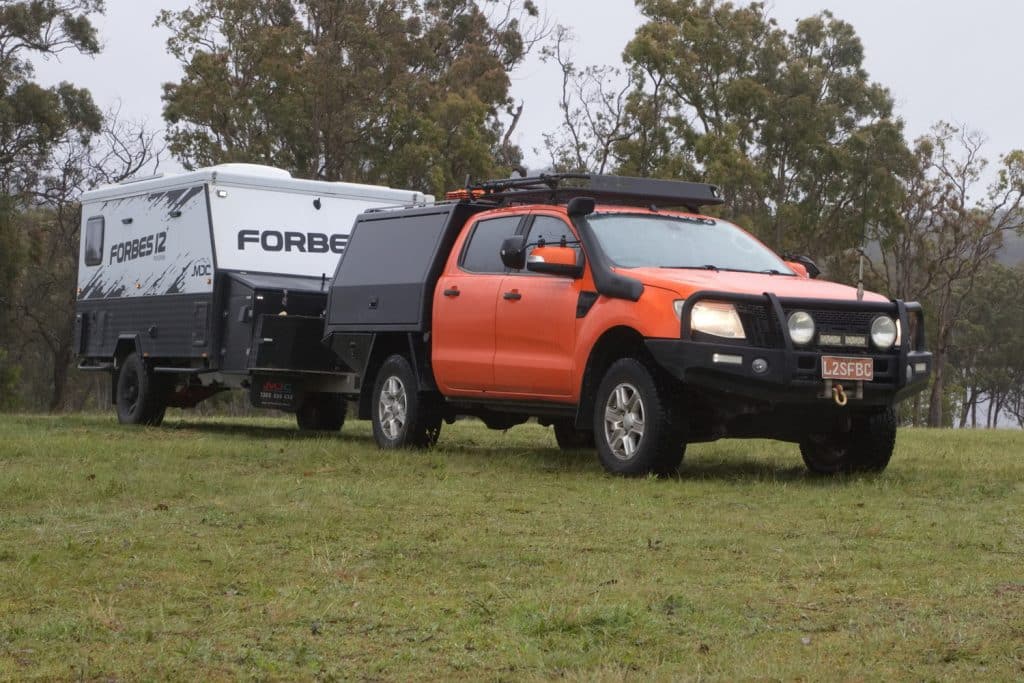
The triangle-shaped part of the trailer between the body and where you hitch it to the car. This is also the visible part of the chassis, the strong metal ‘skeleton’ on which the body of the trailer is built.

The assembly that goes onto the car so you can attach a trailer to it. Sometimes it’s hidden underneath bodywork or built into the car.
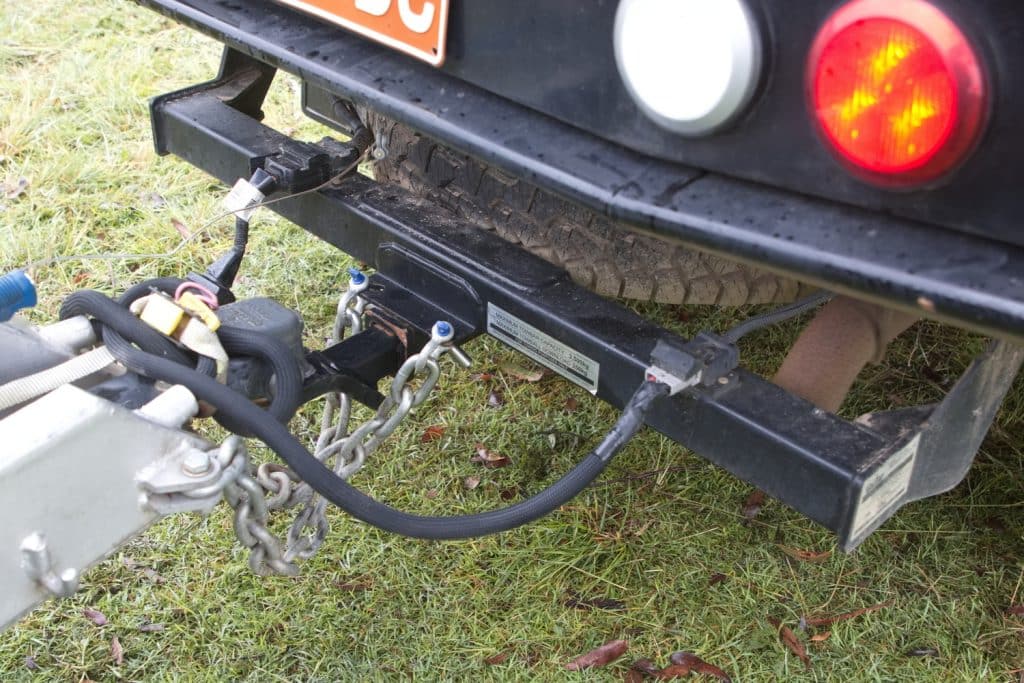
The piece of metal that slides into the towbar.


The pin which secures the tongue to the towbar.

Where the trailer attaches to the tongue. Not all trailers have towballs. They are for common on-road trailers but offroad trailers use offroad hitches which can be rotated 360 degrees. Of course, it’s not recommended that you tow your trailer upside down! Towballs can be 50mm diameter for trailers up to 3500kg or 70mm for trailers 3500kg to 4500kg.

If a tow tongue or towball breaks, then the chains stop the trailer parting company with the towcar. Always best to make sure they’re crossed so the drawbar is caught by the chains if needs be.
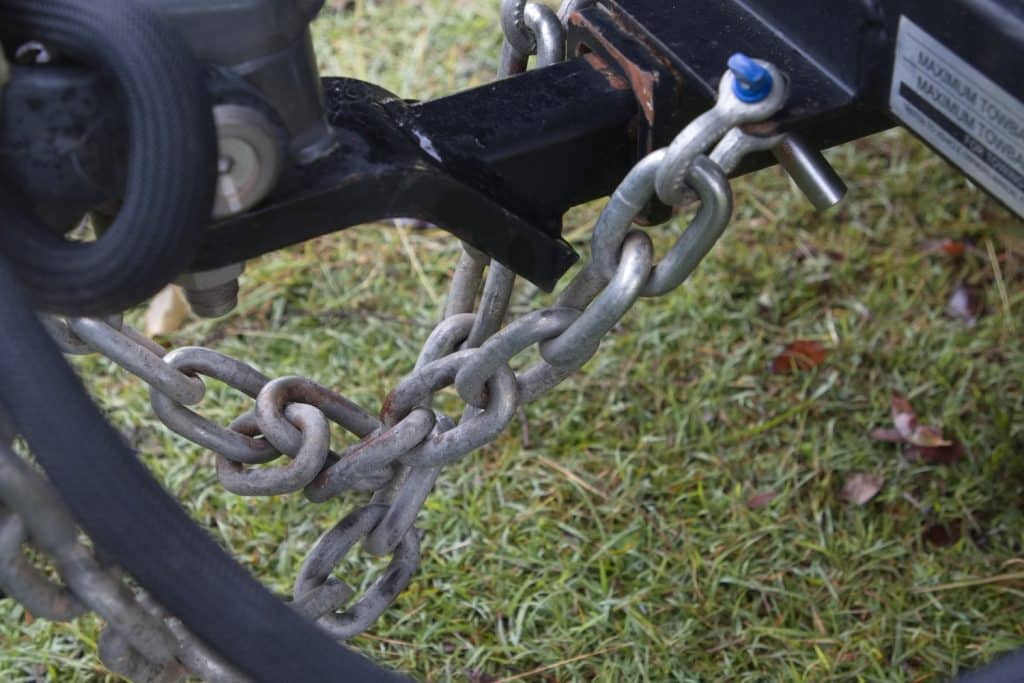
What you use to attach the safety chains to the towbar. These should be embossed with a working load limit and usually have a coloured pin.
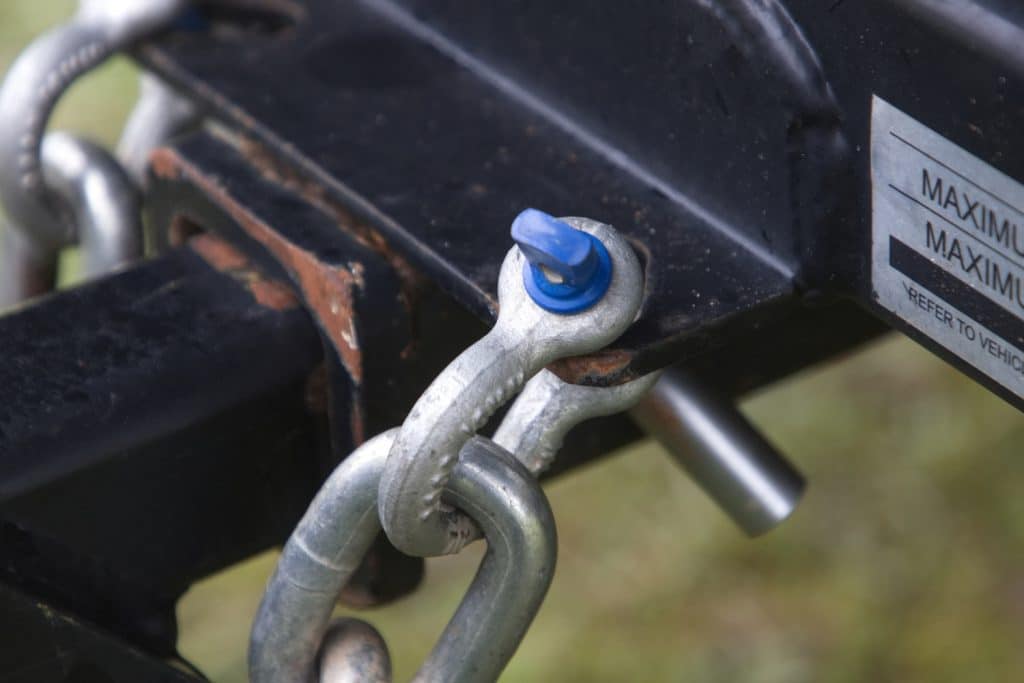
The trailer will, at a minimum, need to replicate the towcar’s brake lights, indicators and rear lights. That’s the job of the electrical connector, which may be a 7-plug round, 7-plug flat, or 12-plug flat. Yes, standards would be nice!
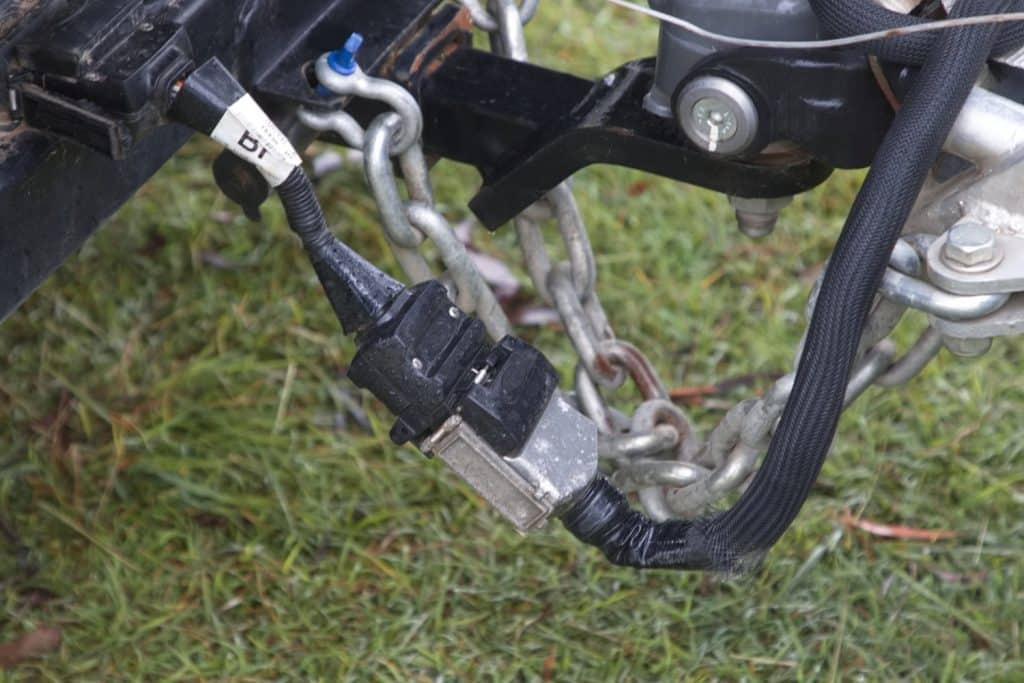
The law says that if the trailer is more than 2000kg GTM (Gross Trailer Mass – the mass on its wheels), then in the event of the trailer completely separating from the towcar then the trailer should be brought to a halt by a separate brake.

When the trailer isn’t connected to the towcar the jockey wheel supports the drawbar. The wheel extends and contracts via a handle to aid connecting the trailer to the towcar. It typically has a wheel so you can push the trailer around.
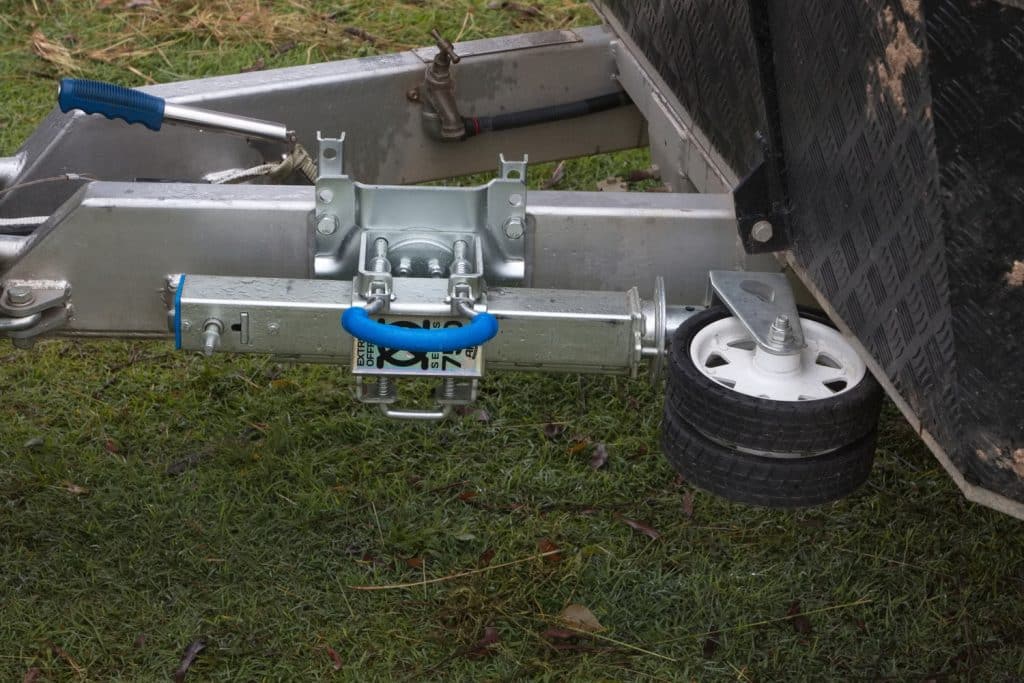
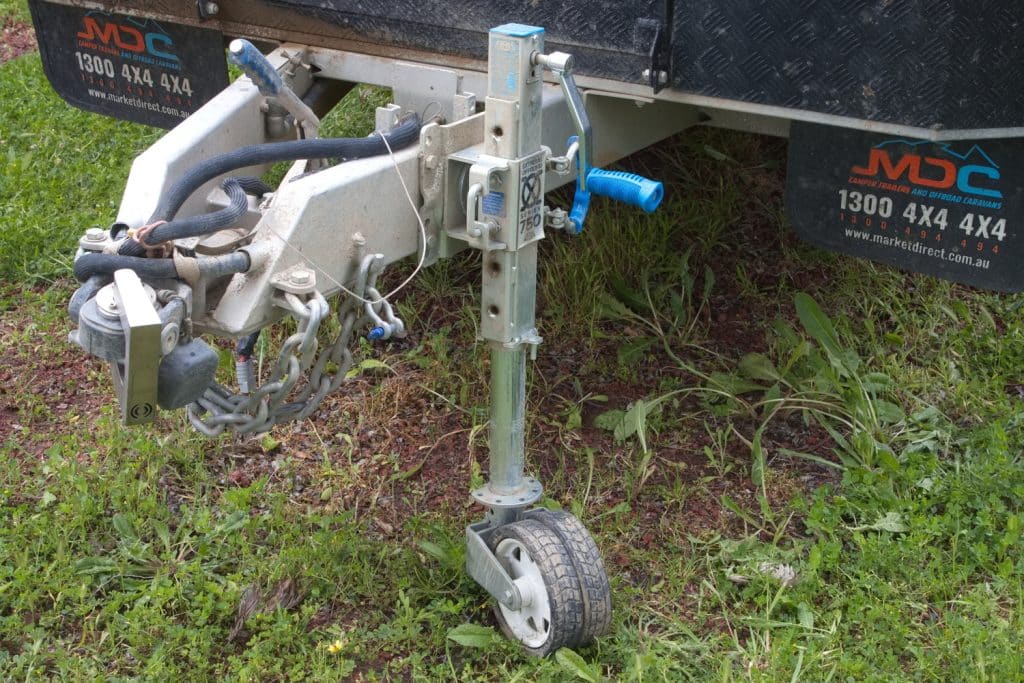
Common on travel trailers. This isn’t part of towing per-se but supplies power to charge the travel trailer’s batteries from the towcar’s batteries.

When you drive offroad it’s common to have the trailer tilted one way and the towcar tilted another, so offroad hitches such as D035s and McHitches are used on offroad-oriented trailers. These hitches allow 360 degrees of movement which a normal towball wouldn’t permit.
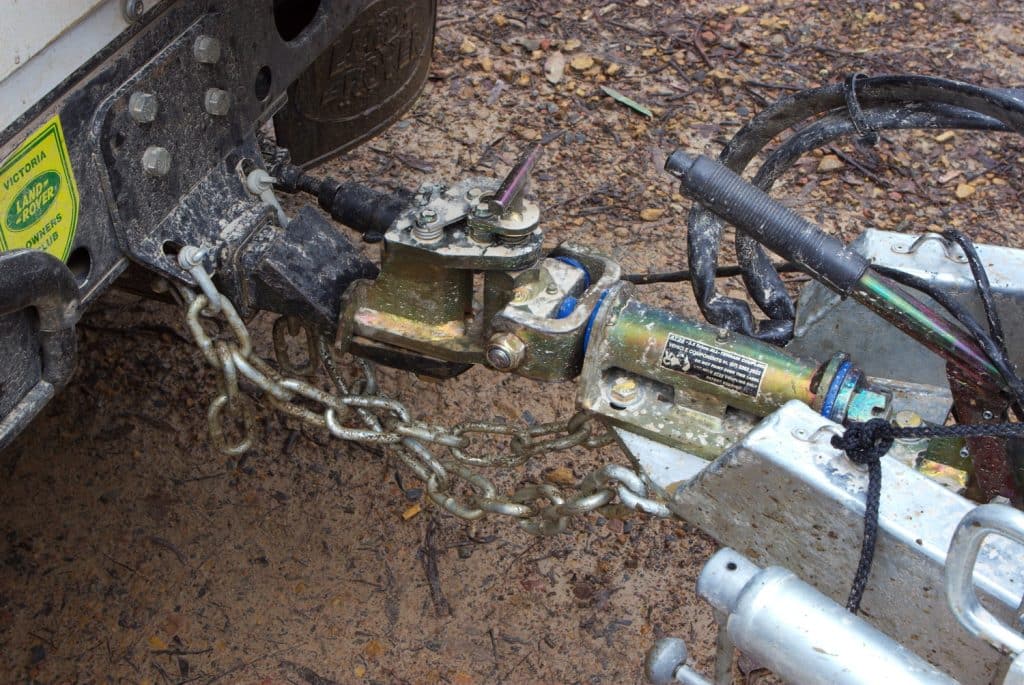

Same as a car’s parking brake, it’s used to secure the trailer when it’s parked. Don’t forget to release it before moving off!!

Trailers over 2000kg GTM need independently operated brakes, and usually those are electrically operated. In the cabin of the towcar is an electric brake controller which the driver can use to operate the trailer brakes independently of the towcar, or have the trailer brakes operate when the towcar brakes are applied.
Some 4WDs have higher than usual towbars, so they need a drop hitch to reduce the height of the towball for road-going trailers.

Extra-wide mirrors so you can see properly when towing trailers wider than the car. Read our guide to why you need caravan towing mirrors and how to choose them.
There’s even more towing terms and we haven’t even started on weights. But if you know the list above you’ll be off to a decent start when talking towing. And where do you find out more? RVDaily, of course!